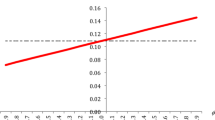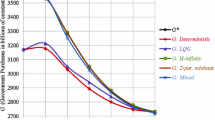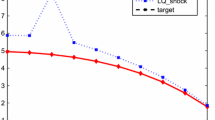Abstract
In this paper, we determine optimal budgetary and monetary policies for Austria using a small macroeconometric model. We use a Keynesian model of the Austrian economy, called FINPOL1, estimated by ordinary least squares, which relates the main objective variables of Austrian economic policies, such as the growth rate of real gross domestic product, the rate of unemployment, the rate of inflation, the balance of payments, and the ratio of the federal budget deficit to GDP, to fiscal and monetary policy instruments, namely expenditures and revenues of the federal budget and money supply. Optimal fiscal and monetary policies are calculated for the model under a quadratic objective function using the algorithm OPTCON for the optimum control of nonlinear stochastic dynamic systems. Several control experiments are performed in order to assess the influence of different kinds of uncertainty on optimal budgetary and monetary policies. Apart from deterministic optimization runs, different assumptions about parameter uncertainties are introduced; the results of these different stochastic optimum control experiments are compared and interpreted.
Similar content being viewed by others
References
R. Neck, Macroeconomic effects of Austrian budgetary policies: Simulation experiments with a small econometric model, in:Cybernetics and Systems Research '92, ed. R. Trappl (World Scientific, Singapore, 1992).
C.S. Tapiero,Applied Stochastic Models and Control in Management (North-Holland, Amsterdam, 1988).
C.S. Tapiero, Applicable stochastic control: From theory to practice, Euro. J. Oper. Res. 73(1994)209.
G.C. Chow,Analysis and Control of Dynamic Economic Systems (Wiley, New York, 1975).
G.C. Chow,Econometric Analysis by Control Methods (Wiley, New York, 1981).
D. Kendrick and P.A. Coomes, DUAL: A program for quadratic-linear stochastic control problems, Discussion Paper 84-15, Center for Economic Research, University of Texas, Austin (1984).
P.A. Coomes, PLEM: A computer program for passive learning, stochastic control experiments, J. Econ. Dyn. Contr. 11(1987)223.
E.C. MacRae, An adaptive learning rule for multiperiod decision problems, Econometrica 43(1975)893.
A.L. Norman, First order dual control, Ann. Econ. Social Measurement 5(1976)311.
D. Kendrick,Stochastic Control for Economic Models (McGraw-Hill, New York, 1981).
R. Neck and J. Matulka, Stochastic optimum control of macroeconometric models using the algorithm OPTCON, Euro. J. Oper. Res. 73(1994)384.
J. Matulka and R. Neck, OPTCON: An algorithm for the optimal control of nonlinear stochastic models, Ann. Oper. Res. 37(1992)375.
R. Neck and J. Matulka, Stochastic control of nonlinear economic models, in:New Directions in Computational Economics, ed. W.W. Cooper and A.B. Whinston (Kluwer, Dordrecht, 1994).
S. Karbuz, J. Matulka and R. Neck, OPTCON: An algorithm for the optimal control of nonlinear stochastic models: User Manual, Discussion Paper No. 284, Department of Economics, University of Bielefeld, Germany (1994).
Author information
Authors and Affiliations
Rights and permissions
About this article
Cite this article
Neck, R., Karbuz, S. Optimal budgetary and monetary policies under uncertainty: A stochastic control approach. Ann Oper Res 58, 379–402 (1995). https://doi.org/10.1007/BF02038862
Issue Date:
DOI: https://doi.org/10.1007/BF02038862




